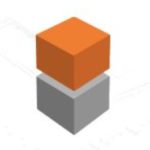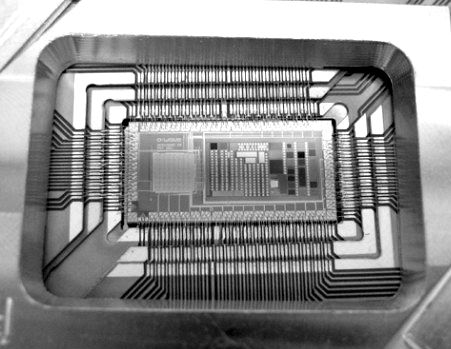As we argued a few weeks ago, the cloud is where quantum competition gets real. With all of the major quantum players (and it is a slim set of contenders) stacked up for remote access from a widening array of users, the stage is set for a new wave of quantum applications driven by early developers.
One key to make quantum innovations based on cloud platforms active for the rest of the world is to open source new algorithms and approaches to interfacing with quantum systems. This is happening in quantum computing languages and we expect this to transition into more use cases and real world applications, especially after today’s news from quantum systems maker D-Wave.
The company has finally opened a cloud environment for public users (their CEO told us that others have been remotely developing for a number of years already) to access an entire 2000+ qubit machine to test and run workloads for free, assuming the core algorithms used go into the open source pool. This will support the continued development of their Ocean SDK and push more potential use cases for quantum computing into the limelight.
This effort, called the Leap quantum development environment, is an important development for a couple of reasons beyond the obvious access to quantum annealing technology it will enable.
While D-Wave is the only maker of commercially available quantum systems, there are other quantum clouds available from IBM and Rigetti with more expected to emerge in the next few years. These offerings are quite different from what D-Wave is providing since first, they are gate model systems that tackle quantum problems in a unique way but second, the cloud-based quantum systems are only available as a few qubits at a time, making more complex simulations difficult.
D-Wave is providing access to the entire 2000+ qubit machine with the same full capabilities that those who buy their annealing systems have access to. For those not familiar with how quantum systems execute, keep in mind that hosting a wide array of users is far different than on a traditional time-shared machine with traditional job schedulers and queues. Since workloads execute on the D-Wave backend system in milliseconds, the wait times are far less of an issue than one might think. Instead of waiting days or hours for a job to run, users submit the job, which may require seconds to minutes in queue with their entire workload executing in the blink of an eye.
As D-Wave’s Director of Software and Cloud Services and one of the leaders behind Leap, Murray Thom, tells The Next Platform, the benefit is that the public can now have immediate access to quantum computers; not simulators or real hardware that needs to be scheduled weeks in advance. The launch of Leap also introduces a number of real world application examples users can implement as well as Jupyter notebooks that provide reference and code for new developers.
Everyone has access to all the qubits and all the couplings and biases for the qubits and all the controls that are our customers of a D-Wave have. The tradeoff for the free one-minute access that is granted (that seems like a catch but again, it isn’t since jobs execute so quickly) is that the model and algorithm for executing the code must be packed into the pool of open source code.
So is it possible for users with unique problems based on their own datasets to use the free access in enough volume and complexity to solve truly business or mission-critical work? Or are there some unseen limiting factors?
Thom tells us that these go beyond reference architectures and frameworks. The idea is actually to bring in custom problems, but those need to feed back into the open source community—but the internal data does not. He says that the Volkswagen traffic optimization use case that generated interest in D-Wave last year was done using all the same access to controls and functionality that cloud platform users will have now. “If you are okay with building a technique for mapping something that like this problem and you are fine with open sourcing that technique but want to keep your own data, that is how this is designed to work.
So yes, it is a free platform that can actually be used for truly meaningful quantum work. Researchers take note. And certainly, no one is going to use this to crack RSA encryption and destroy the world as we know it with this access but it does open a conversation about growing capabilities and access to those. “People have the freedom to experiment and share, every aspect of the design is about giving people the information they need to create themselves the room and access they need to learn—there is a period of learning—but also the tools and software development kit with automation built in to make mapping and solving easier.”
Another noteworthy aspect of D-Wave’s quantum accessibility is that there might be a better base to compare performance of different quantum approaches (gate versus annealing—and of course, having more versus fewer qubits). Users can try out IBM or Rigetti and then D-Wave to see how their problem fits best to different models. Not all work is transferrable, however. As Thom explains, “One of the base components of a gate model requires one to program in a quantum physics Hamiltonian, so that is a bit apples and oranges. But for users looking at application data and wanting to analyze social networks or solve linear equations or tackle machine learning, there are ways to use those optimization problems on our platform or other gate model quantum computers.”
“We have been providing remote access to select users for a long time already. We have a frontend that receives requests, we have projects that come into the system and a scheduler that pulls jobs off the queue and passes those to the quantum processor. The processor can pass jobs through at a rate of one job every 15-250 milliseconds, depending on how long the developer prepares the job for. It’s trying to keep a queue long enough to keep the system busy at 99.7% utilization,” Thom explains.
“We’ve been able, during peak utilization, but we’ll try to keep enough systems behind the scenes so the system isn’t peaking out so we can avoid long queueing times. But scheduler design was definitely a key element in this project but this makes sense with a time-shared service with a large number of users. We are also trying to create access to info on the dashboard so users can see how much access they have remaining and how long they need to wait.”
The Ocean SDK has several features that have been added over time to ease quantum programming. “We have been able to build layers of abstraction over the course of all the development work with early users over the last decade. You don’t need to learn machine instructions for quantum computers; all that access to those instructions, post processing techniques, control over their quantum annealing process, those are all things our users over the years have requested when they’re getting into lower-level work in materials or performance tuning, for example.”
The Leap environment can be accessed here.

